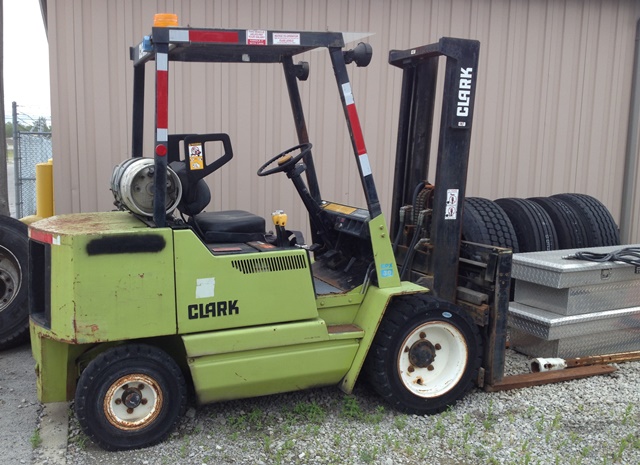

CLARK’s pioneering operator restraint system was offered free of charge to existing CLARK fork lift truck customers. The CLARK safety seat retrofit program is launched. The ECA model evolved into the ECS17-30 in 1987, which in turn evolved into the ECG20-32 in 1996. They represented a major advance in CLARK electric lift truck design and ergonomics through improved reliability, productivity and operator comfort. The ECA17-30 & EPA 20-30 four wheel electric trucks are introduced. Donated to Western Michigan University in 1977, this truck is still in service today. These trucks provided performance options based on the demands of the customer’s application.ĬLARK’s Georgetown, Kentucky plant begins production of sit down, narrow aisle stand-up & Powrworker electric lift trucks.ĬLARK builds its 500,000th truck, a C500-50 internal combustion four wheel fork lift truck. The TM10/15S in turn evolved into the 36 volt TM15/20 in 1986.ĬLARK offers the industry’s first dual voltage electric trucks. The TW15/20 evolved into the 24 volt TM10/15S in 1981.

This highly maneuverable lift truck was used across multiple industries including shipping, warehousing and bottling. The TW15/20 was the first electric three-wheel lift truck in the U.S.
#Clark forklift serial number year install#
It eventually superseded the Carloader, Utilitruck and Clipper models.ĬLARK is the first lift truck manufacturer to install load back rests and overhead guards as standard equipment on all of its trucks. The Clarklift was a complete line of internal combustion and electric powered fork lift trucks and was available in both cushion and pneumatic-tired versions. Like the Carloader and Utilitruc models, the Clipper was manufactured until 1964. The Clipper became a standard for the internal combustion forklift industry and at one time accounted for 50 percent of all sales in the 2000 pound capacity range. By the end of the war, the widespread use of CLARK lift trucks by the Allied Forces and war-related industries made “CLARK” and “fork lift” almost synonymous. It was once said during WWII that there was not an air field under Allied control that did not have a CLARK fork lift truck or tow tractor. This heavy-duty internal combustion CLARK forklift was used mainly in the metal fabrication and stevedoring industries and remained in production until 1964.ĬLARK produces almost 90 percent of the military requirements for fork lift trucks and tow tractors. The Tructier was the world’s first internal combustion fork lift truck that used hydraulics, not chains and cables, to lift a load. The Truclift was the world’s first internal combustion lift truck that used hydraulics, not mechanical gears and linkage, to lift a load. The Truclift, an internal combustion-powered platform lift truck, is introduced. In 1918, eight Tructractors were built and in 1919 over 75 were manufactured.

However, visitors to the plant were impressed with its practicality and asked CLARK to also build Tructractors for them. It was used to haul materials between CLARK’s various axle, drill and wheel departments. The Tructractor was originally configured with a flat bed or cargo box and was manually loaded and unloaded. The Tructractor was the world’s first internal combustion-powered industrial truck. The first Tructractor is built in Buchanan, Michigan by employees of the CLARK Equipment Company. 100 Years of Manufacturing CLARK Forklifts


 0 kommentar(er)
0 kommentar(er)
